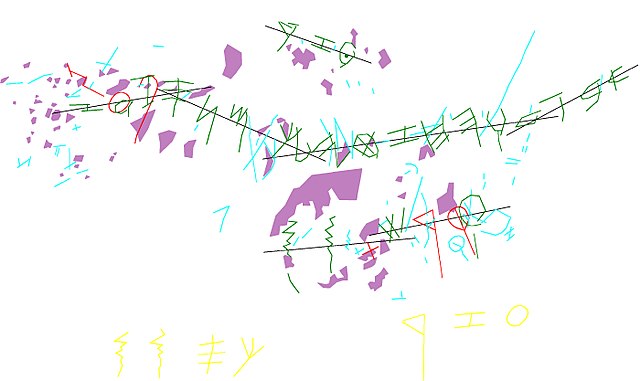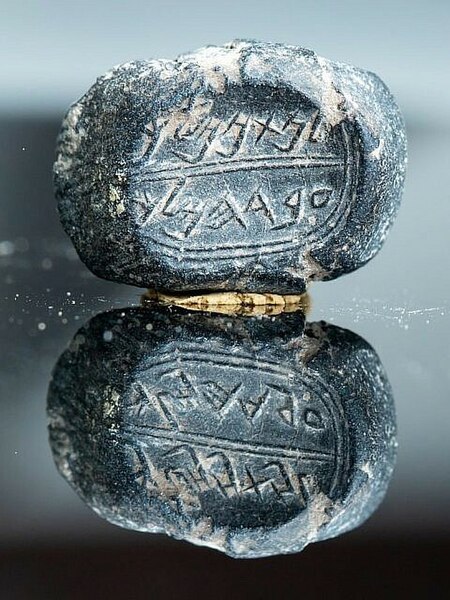The Zayit Stone is a 38-pound (17 kg) limestone boulder discovered on 15 July 2005 at Tel Zayit (Zeitah) in the Guvrin Valley, about 50 kilometres (31 mi) southwest of Jerusalem. The boulder measures 37.5 by 27 by 15.7 centimetres and was embedded in the stone wall of a building.
It is the earliest known example of the complete Phoenician or Old Hebrew script as it had developed after the Bronze Age collapse out of the Proto-Canaanite alphabet.
Drawing of inscription on the Zayit Stone
It consists of the first letters of the Phoenician-Hebrew alphabet: 𐤅𐤄𐤇𐤆𐤈 (right-to-left: wāw, hē, ḥēt, zayin, ṭēt).
The Phoenician alphabet is a consonantal alphabet used across the Mediterranean civilization of Phoenicia for most of the 1st millennium BCE. It was the first mature alphabet, and attested in Canaanite and Aramaic inscriptions found across the Mediterranean region. In the history of writing systems, the Phoenician script also marked the first to have a fixed writing direction—while previous systems were multi-directional, Phoenician was written horizontally, from right to left. It developed directly from the Proto-Sinaitic script used during the Late Bronze Age, which was derived in turn from Egyptian hieroglyphs.
Seal inscribed in the Phoenician script (also known as Paleo-Hebrew)
Study of Phoenician medals, by Jean-Jacques Barthélemy
The Pococke Kition inscriptions, transcribed by Jean-Jacques Barthélemy. No. 1 is Pococke's No. 2 (KAI 35), and No. 3 is Pococke's No. 4. The other two are Hebrew transliterations of the same inscriptions.
Photograph of section of the Zayit Stone, 10th century BCE: (right-to-left) the letters waw, he, het, zayin, tet (𐤅𐤄𐤇𐤆𐤈)





